Our beautiful blue eyed Tiana
At 6 months old we realised our beautiful blue eyed Tiana was developing quite slowly, but we were told not to worry. 6 months later she had barely improved and we insisted on her being checked thoroughly. Over the following year we discovered that things were badly wrong. After numerous and painful tests she was given a muscle biopsy. At 2 years old we were told the thing we most feared – Tiana had Mitochondria Disorder Complex 1. The mitochondria (powerhouse) which operated her muscles weren’t working properly. There was no treatment and no cure. We had to just wait for our baby to die.
She began to stop doing the things she used to, she got exhausted quickly, she stopped saying her little words, she became unable to cry, not because she was always happy, but because she couldn’t. Her muscles wouldn’t let her. Even when she fell once and hit her head badly she just shook without crying. She stopped drinking and had to have a nasal tube for her fluids. Then, for a short period, she seemed to be improving slightly and we prayed she was going to be the miracle child who would live. Our hopes were short lived. On 29th April 2006 she woke but was lethargic, she had a little cough and seemed chesty so we took her to our local hospital. Within 24 hours she was put on a ventilator and taken by a special ambulance unit to the intensive care Evelina Ward in Guys Hospital, London. Covered with tubes and needles, she fought to live. A week later an MRI scan revealed that she no longer had the strength to breathe on her own – her respiratory system had failed. Now we had to choose. Keep her on a ventilator in hospital where she may live a bit longer or take her home to die without all the needles and tubes. It is the hardest decision to make. As a parent you are screaming inside ‘No we can’t just let her die – we want to keep her alive as long as possible – keep her on the machine – things may change’ but then your baby looks at you, pleading with her eyes to let her go – she hates the tubes and needles and she can’t fight anymore. You have to make the decision for her, not for you.
We decided to take her home. Family and friends came to the Hospital to say their goodbyes, and you just look on, numb with pain,‘so this is what it feels like when your heart is breaking’. She was ambulanced home on May 8th. It was then we knew we had made the right decision. She smiled for the first time since she had been taken into hospital, she played with her favourite toy and we had a bath with her. She knew she was home. We held her and told her how much we loved her.
The next morning at 8.30 the community nurse told us she was deteriorating and not responding. I couldn’t hold her because she was so floppy and I was so scared. My husband Steve held her and we sat on the sofa just talking and stroking her. I looked at my watch. She had been born on a Tuesday at 10.45 and I instinctively knew she would die at the same time on the same day. I looked up at her and she opened her beautiful eyes, saw me and took a deep breath. It was her last. It was 10.45am. 2 years and 7 months after we saw our daughter being born, we watched her die. It is something no parent should have to do and our lives will never be the same again.
There is no treatment for Mitochondrial disorder. We know very little about it. Many cot deaths are now being linked with this disorder amongst other illnesses. We need more than ONE lab in UK for research. We need more specialised doctors. We have to find out more, before many more children die in this terrible way. Hundreds of children could be saved if we can find a treatment.
We need more money to do it. Please, please help us.

FIND OUT HOW TO DONATE
